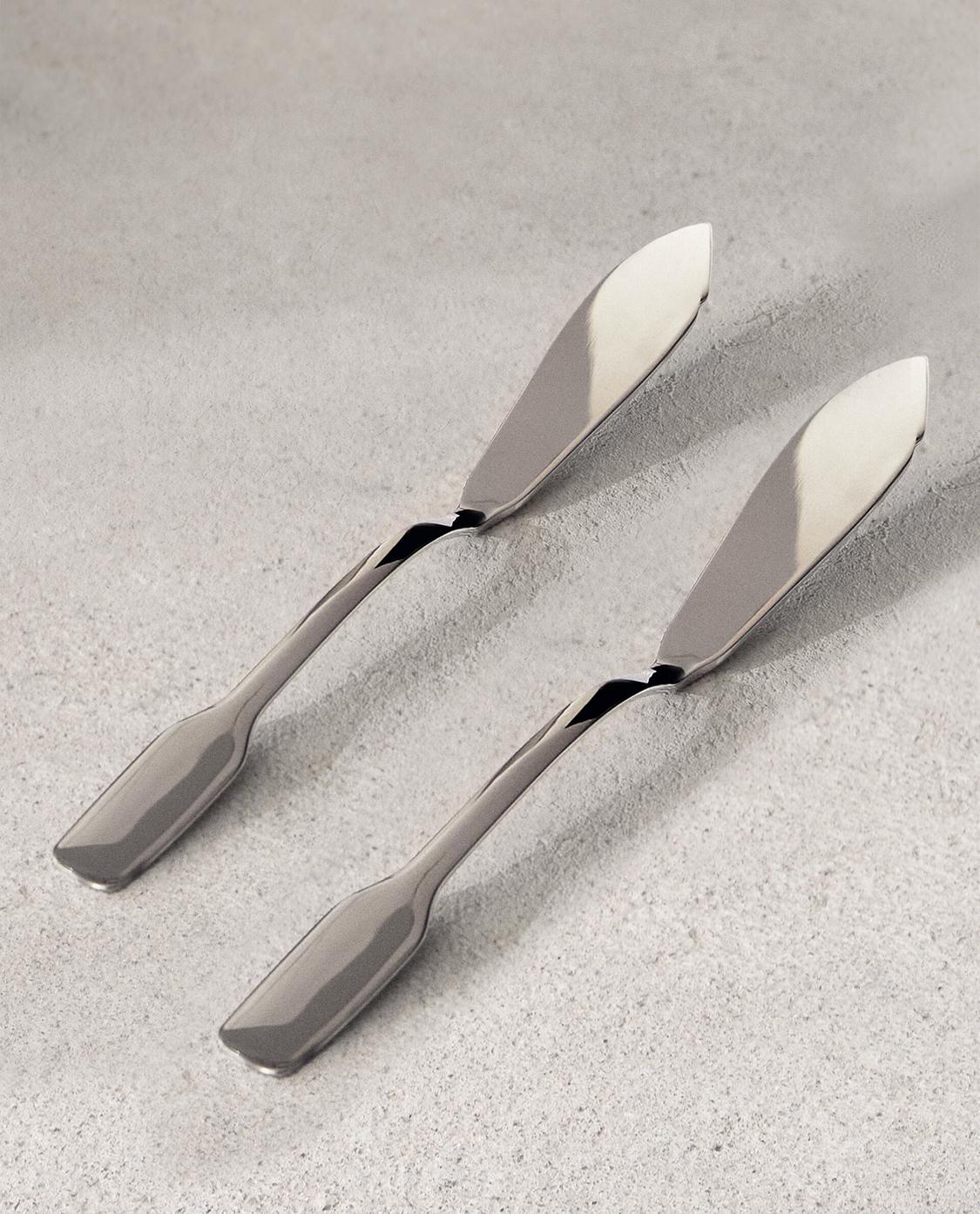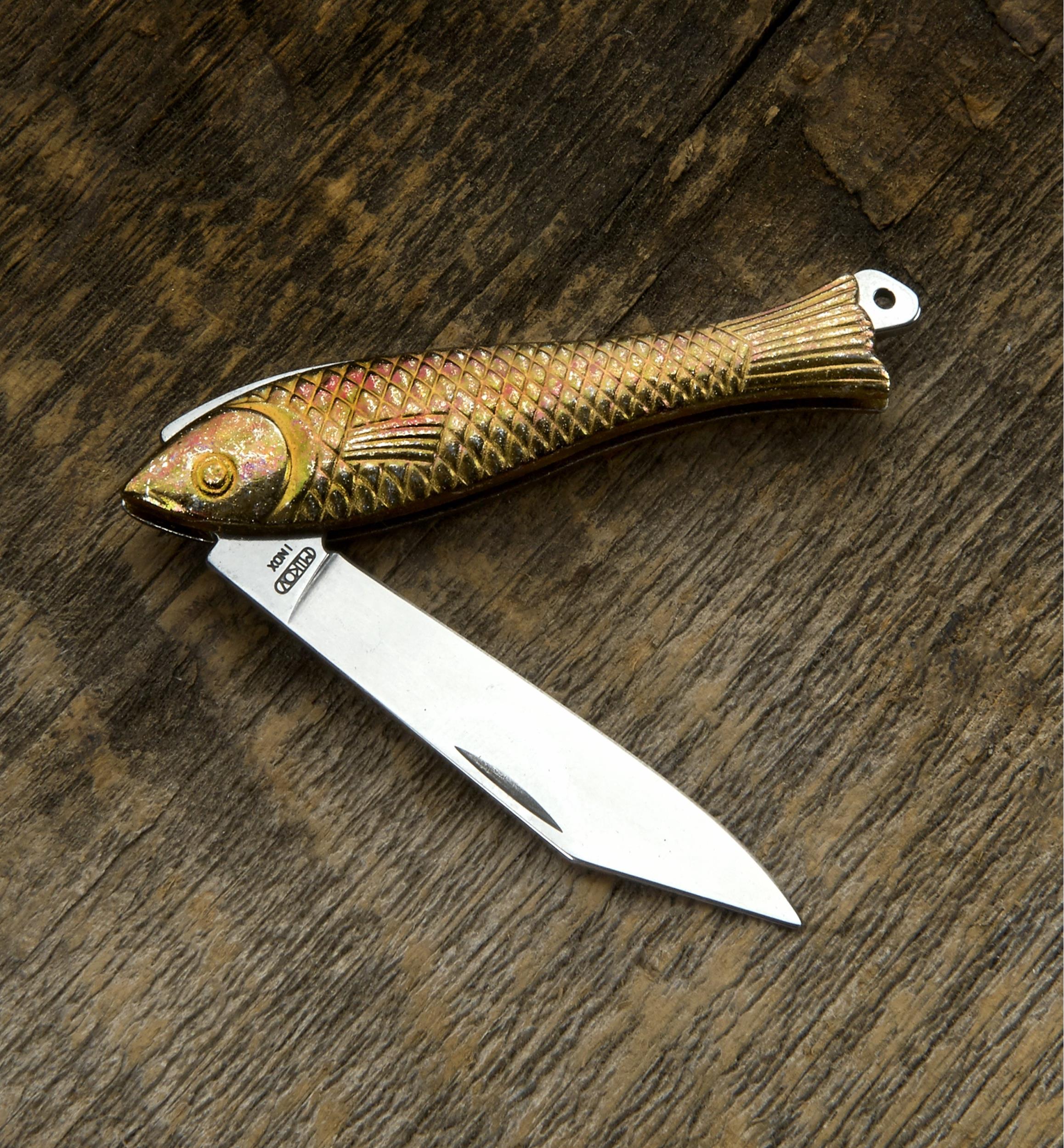Discover the Vital Functions to Try To Find in a Top-Quality Fish Knife
When picking a fish knife, numerous key functions demand interest. The blade product substantially impacts longevity and sharpness, while versatility plays a critical duty in accuracy. Additionally, the manage layout impacts convenience throughout expanded use. Side retention and safety and security features are likewise important for useful use. Understanding these components will certainly lead consumers towards making an educated choice, yet the nuances of their relevance may not be right away clear.
Blade Product and Construction
The performance of a fish knife greatly pivots on its blade product and construction - fish knife. Top quality fish knives usually feature blades made from stainless-steel, high-carbon steel, or a mix of both. Stainless steel is preferred for its deterioration resistance and reduced maintenance, making it excellent for freshwater and deep sea environments. High-carbon steel, while vulnerable to rusting, uses exceptional sharpness and edge retention, attracting those that focus on reducing efficiency
The construction of the blade likewise plays an essential role in its performance. Full-tang blades, which prolong the whole length of the manage, provide improved strength and balance. On the other hand, partial-tang blades might jeopardize resilience. Furthermore, the density of the blade ought to be thought about, as thinner blades permit for much more exact cuts, vital for fragile fish filleting. Ultimately, a well-constructed blade, utilizing the ideal products, is basic for achieving the very best outcomes when preparing fish.
Blade Flexibility and Length
Blade flexibility and size are essential elements that substantially influence the efficiency of a fish knife. An adaptable blade enables exact cuts and the capability to steer around bones and skin, making it vital for filleting fish properly. The appropriate quantity of flexibility can enhance control, enabling the user to accomplish tidy, smooth cuts with marginal initiative.
In regards to length, fish knives commonly vary from 6 to 9 inches. A longer blade is helpful for bigger fish, supplying the reach required for efficient filleting. Alternatively, a shorter blade provides maneuverability, making it suitable for smaller fish or intricate jobs.
Inevitably, the selection of versatility and length must line up with the certain fishing requirements and preferences of the individual. A well-balanced combination of these attributes guarantees optimal performance, boosting the total fish prep work experience.
Take Care Of Layout and Comfort
A well-designed handle is vital for making sure comfort and control when using a fish knife. The manage ought to fit firmly in the hand, enabling a company grip throughout complex tasks such as filleting or skinning fish. Products like rubber, wood, or composite provide various levels of convenience and traction, influencing the customer's experience.
Ergonomic features are additionally vital; shapes that comply with the all-natural shape of the hand can reduce fatigue during prolonged usage. Additionally, the manage's texture plays a substantial role in avoiding slippage, especially when collaborating with damp hands.
Weight circulation is another element that adds to the total balance of the knife, improving ability to move. A comfortable handle layout not only enhances efficiency yet additionally advertises safety and security, as a protected hold decreases the risk of crashes (fish knife). Ultimately, a thoughtful manage layout can considerably raise the efficiency of a fish knife in cooking applications
Side Retention and Sharpening
While using a fish knife, preserving a sharp edge is critical for attaining tidy cuts and precise filleting. A top quality fish knife must show superb side retention, permitting it to remain sharp via multiple uses. This particular is typically figured out by the kind of steel utilized in the blade; high-carbon stainless steel is regularly favored as a result of its equilibrium of firmness and rust resistance.

Security Attributes and Sheath Options
Numerous safety features and sheath options are important considerations when choosing a fish knife. A secure and ergonomic handle reduces the danger of slips during usage, improving individual security. Distinctive holds and finger guards even more avoid accidents, permitting for far better control while filleting fish.
Furthermore, a blunt suggestion can reduce the risk of slit injuries, making it a safer choice for amateur individuals.
Sheath alternatives additionally play a crucial duty in security. A well-designed sheath protects the blade, protecting against accidental cuts when the knife is saved or delivered. Sheaths made from long lasting materials, such as nylon or tough plastic, offer added defense versus environmental elements.
Some sheaths include belt clips or loops, making certain the knife is quickly obtainable while continuing to be safe and secure. Ultimately, prioritizing security functions and sheath alternatives adds substantially to the overall capability and user experience of a fish knife.
Often Asked Inquiries
What Is the Finest Brand Name for Fish Knives?
The most effective brand for fish knives typically differs by choice, but popular names like Wüsthof, Victorinox, and Reject are often advised for their longevity, sharpness, and craftsmanship, making them top selections among culinary lovers and specialists alike.
Can Fish Knives Be Used for Other Kinds Of Fish?
Fish knives can certainly be utilized for various other sorts of fish. Their design and intensity make them flexible sufficient for numerous fish species, boosting the total experience of filleting and preparing different kinds of fish and shellfish.

How Do I Clean and Keep My Fish Knife?
To clean and maintain a fish knife, rinse it with cozy water after usage, gently scrub with moderate soap, completely dry thoroughly, and store in a protective sheath to stop damage and corrosion. Routine honing is important.
Are There Fish Blades Especially for Left-Handed Users?
Yes, there are fish blades designed particularly for left-handed customers. These knives feature reversed blade angles and ergonomic handles, making certain convenience and efficiency for left-handed individuals while filleting and preparing fish. Quality choices are offered from different makers.
What Is the Price Range for Quality Fish Knives?
Quality fish knives normally vary from $20 to $150, relying on products, brand credibility, and workmanship. Higher-end alternatives might include superior ergonomics and specific designs, while budget-friendly choices still use acceptable efficiency for informal customers.
The efficiency of a fish knife mostly hinges on its blade product and building and construction. Top notch fish knives usually feature blades made from stainless steel, high-carbon steel, or a mix of both. Blade versatility and length are important aspects that considerably click here influence the efficiency of a fish knife. Fish knives can indeed be made use of for other types of fish. These blades feature reversed blade angles and ergonomic handles, making certain comfort and efficiency for left-handed people while filleting and preparing fish.